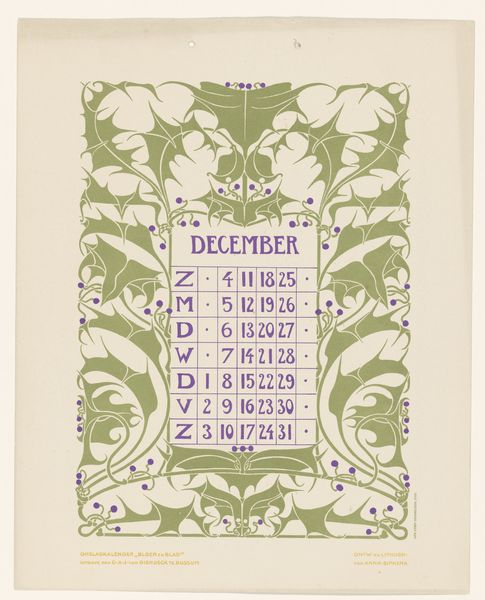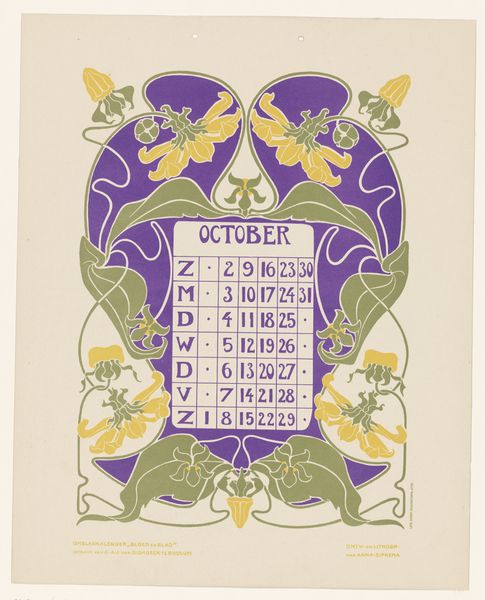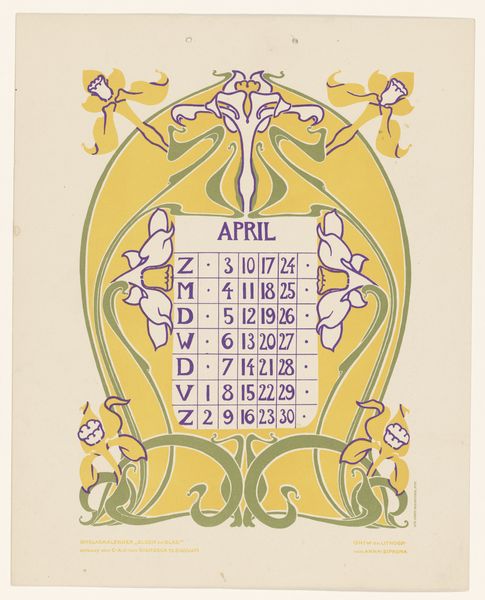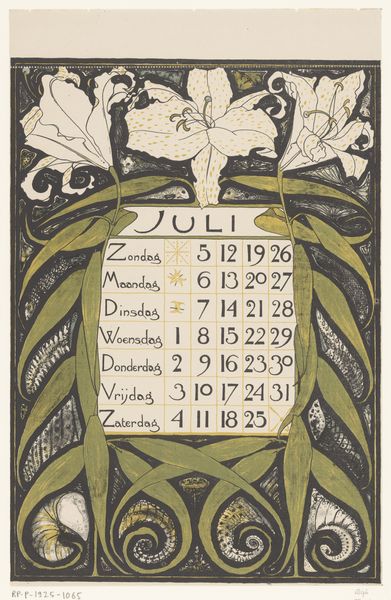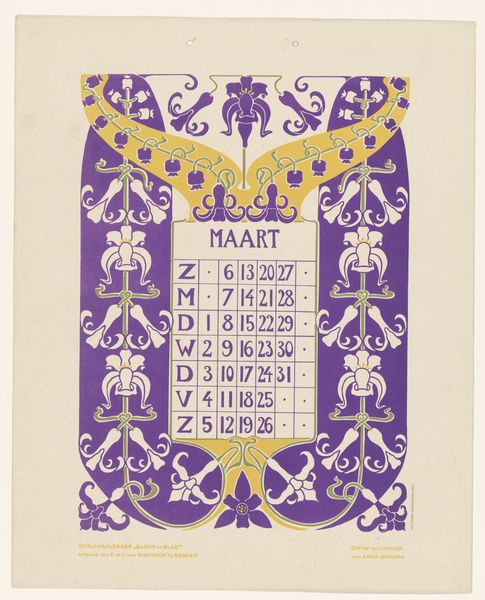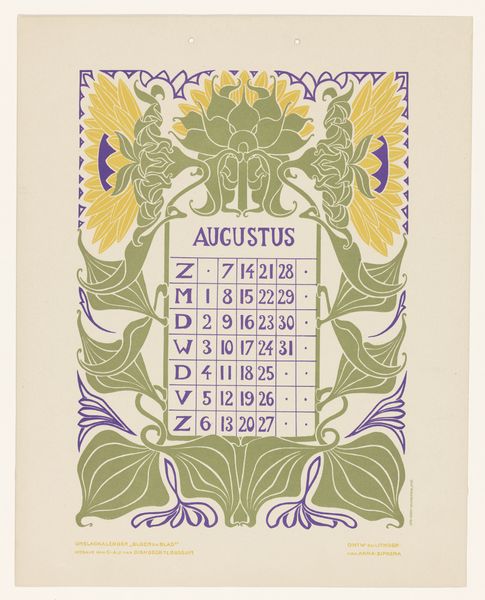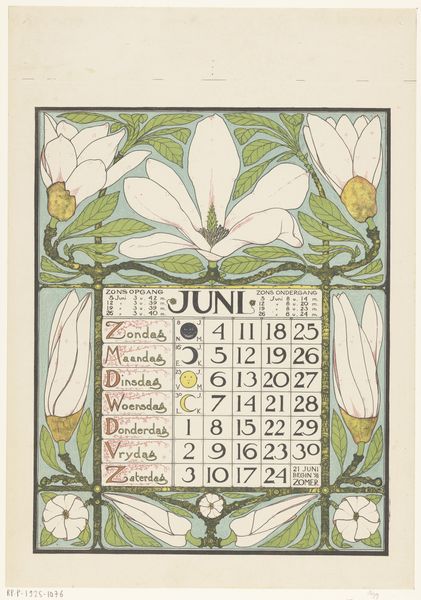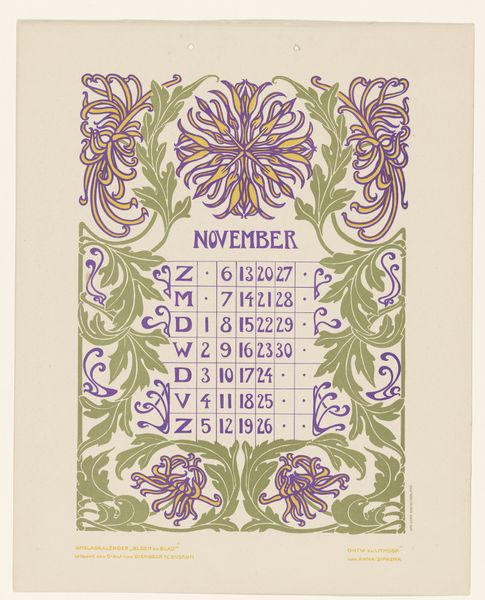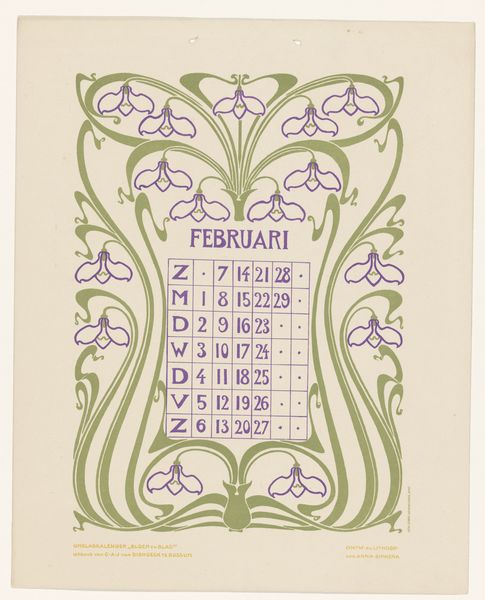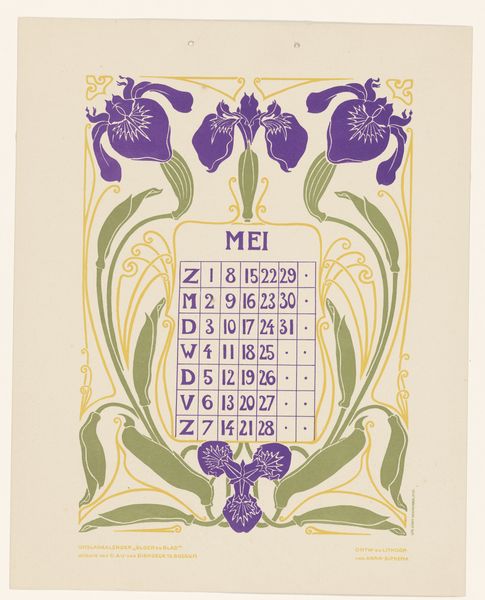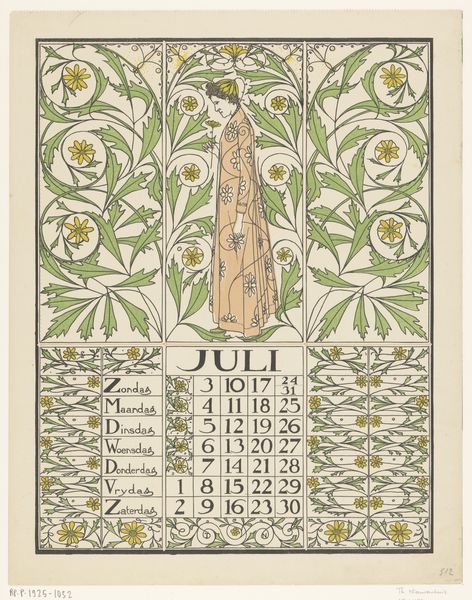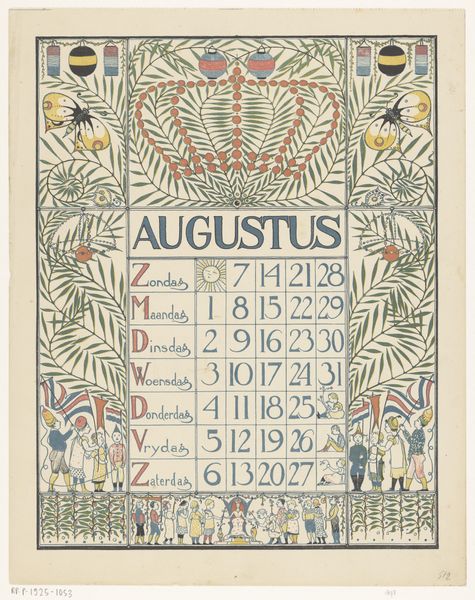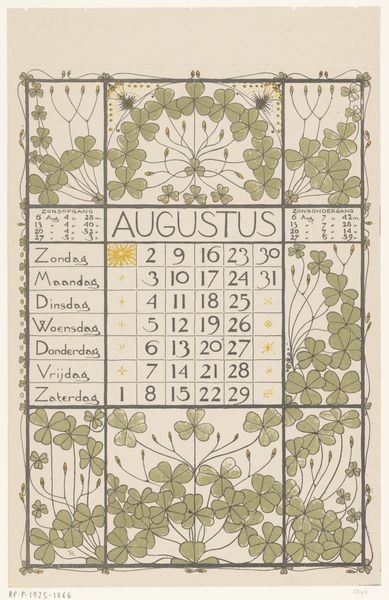
print, poster
#
organic
#
art-nouveau
# print
#
linocut print
#
organic pattern
#
decorative-art
#
poster
Dimensions: height 315 mm, width 250 mm
Copyright: Rijks Museum: Open Domain
Curator: Immediately, I’m struck by the cool serenity of the piece. It's titled "Kalenderblad juli met bloemen"—July Calendar with Flowers—made by Anna Sipkema sometime before 1904. There's a stillness, a meditative quality. Editor: Definitely a restful image, and those muted purples and greens speak to the process. It seems a carefully considered, layered print… likely a linocut given the date, though perhaps a poster. The registration must have required skill, judging from the details. Curator: It certainly possesses an appealing symbolism. The blossoming flowers, recurring as stylized motifs around the grid of days, are common metaphors for the month of July. Midsummer’s flourishing vitality rendered in art nouveau sensibilities, no? Editor: Yes, that rhythmic repetition lends a kind of manufactured “natural” feel. But think of the labor required. To me, it's less about raw organic growth, and more about an industrial, though very aesthetically pleasing, way of presenting the month, packaging time itself. Curator: Yet, aren't the two connected? Isn't the purpose of decoration and of time keeping, to link daily labor with natural order, creating ritual and psychological anchoring. Calendars do tell us how and when to mark important occasions. In this particular print, Sipkema links flowers with July through stylized symbols. Editor: An interesting way to look at it. Still, I can't help but wonder about the conditions in which these prints were made, how Sipkema conceived of them as commodities—beautifully made, but commodities nonetheless. Curator: I see your point. Perhaps there is always that tension, between utility, and aesthetics, meaning and making. Thanks for making me rethink my assumptions here. Editor: Likewise. Looking at the piece this closely illuminates not just the artist's hand, but the economic context, and social structures of the time.
Comments
No comments
Be the first to comment and join the conversation on the ultimate creative platform.
